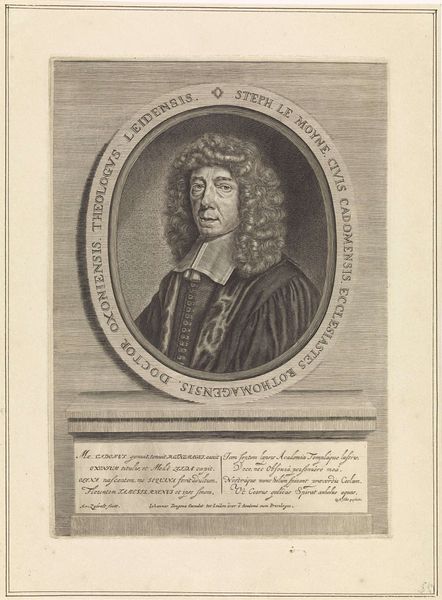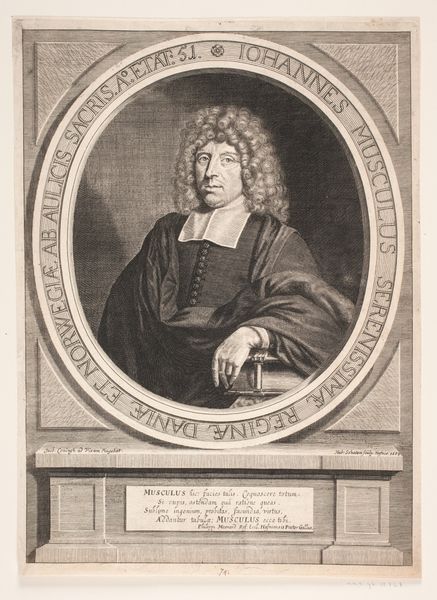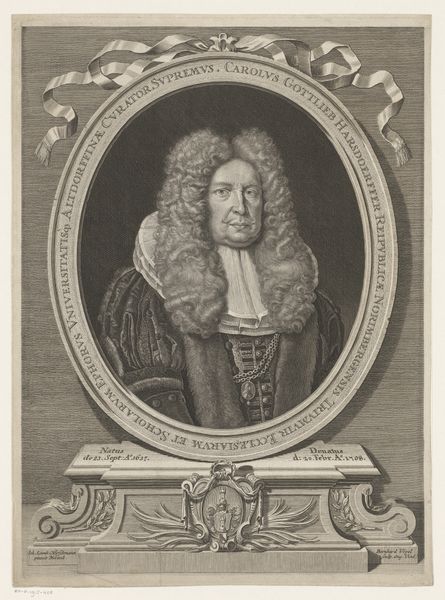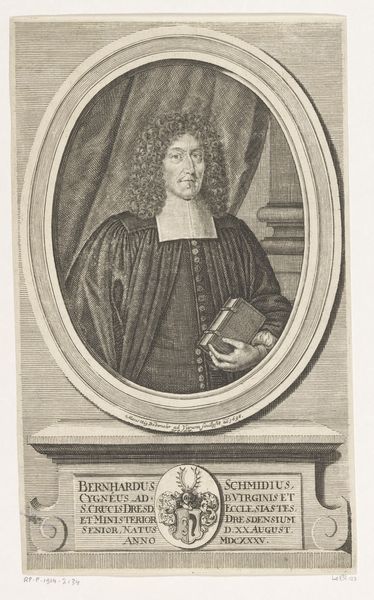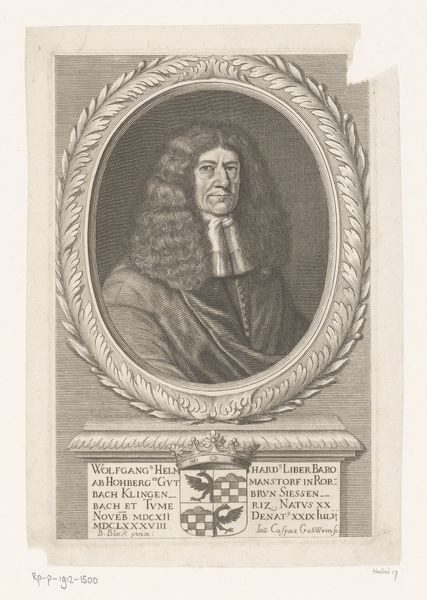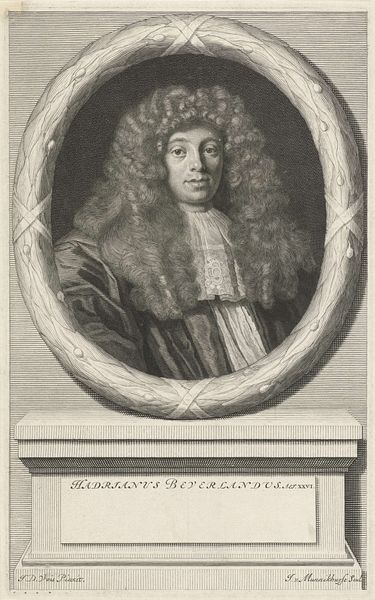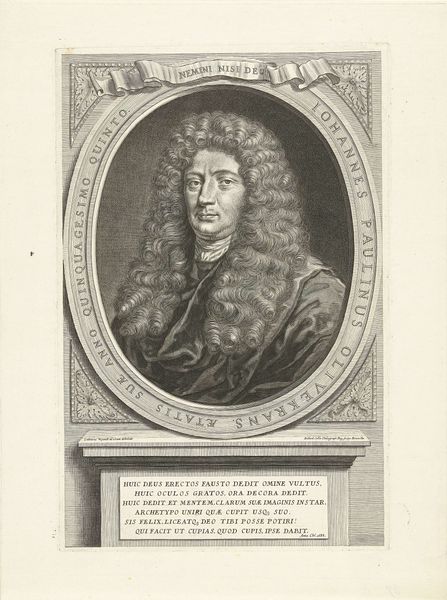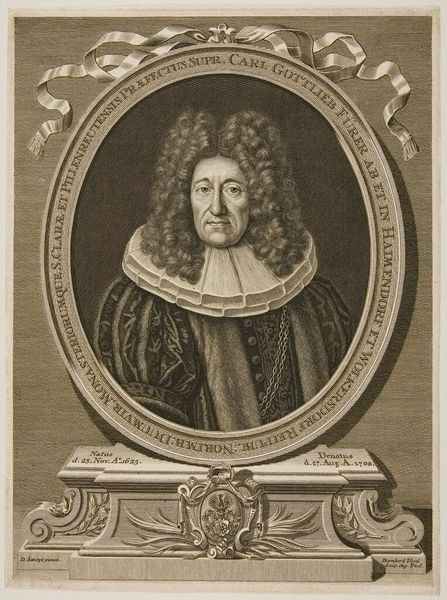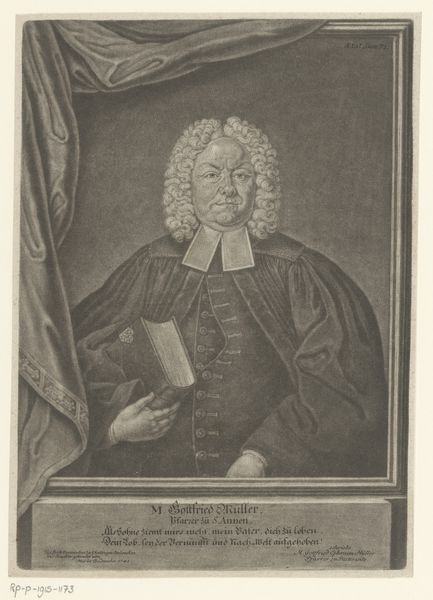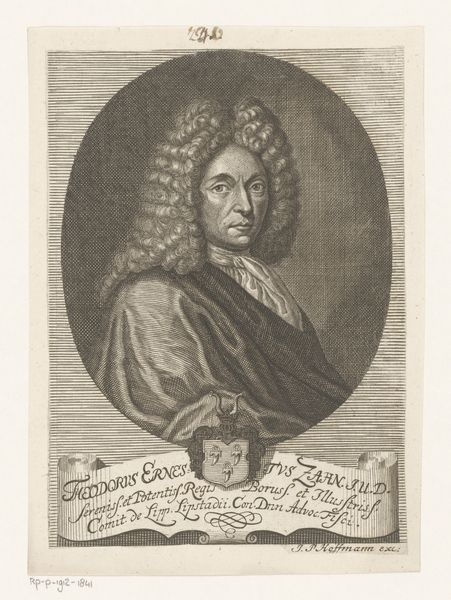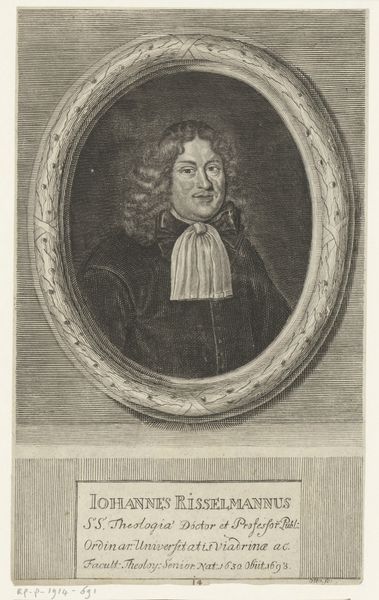
engraving
#
portrait
#
baroque
#
engraving
Dimensions: height 268 mm, width 184 mm, height 351 mm, width 254 mm
Copyright: Rijks Museum: Open Domain
Curator: Looking at this engraving, created possibly between 1687 and 1720 by Anthony van Zijlvelt, I'm struck by the way it positions Etienne le Moine within the visual language of power. It speaks volumes about class and the societal expectations of the time. Editor: The ornate frame immediately draws me in. Even within the confines of black and white engraving, the sheer weight of detail communicates luxury. He appears as an intellectual figure—a certain weightiness that the engraving captures beautifully. Curator: Absolutely, the material representation of Le Moine through engraving makes an argument about access, about who gets memorialized. In this Baroque portrait, Le Moine’s professional status, the title listed below the oval, further cements his place within the academy. This portrait asserts the power structures of its time. Editor: That oval form is important, isn’t it? I keep thinking about the echoes it creates. From ancient cameos, to more recent religious icons, the oval shape focuses our gaze on a figure that has authority and worth. He almost seems elevated, or enshrined, for posterity. Curator: And what of Le Moine's own involvement in shaping these cultural values? As a professor of theology, his worldview must have contributed to the systems this portrait reinforces. I’m interested in exploring his theological stances in greater depth in order to analyze this portrait more completely. Editor: It’s interesting how the image seems self-referential, too, since we are viewing a framed portrait *of* a portrait, displayed as a freestanding bust. This Baroque theatricality definitely contributes to a message that is hard to ignore. Curator: Precisely! It is a powerful declaration of permanence within the social and intellectual hierarchy. This print demands consideration of what visibility truly meant in 17th-century European academic society. Editor: Looking at it again, I see this engraving as less a personal likeness and more as an ideal. An aspiration, almost like a religious figure presented to those seeking wisdom or virtue. The symbol of intellectual authority—in enduring metal. Curator: Indeed, exploring that symbolic resonance really unlocks another layer of interpretation, understanding the image as an expression of prevailing social ambitions, even to modern day. Editor: Seeing those details allows us to look at how images speak beyond their literal depiction, revealing what society values across time.
Comments
No comments
Be the first to comment and join the conversation on the ultimate creative platform.
